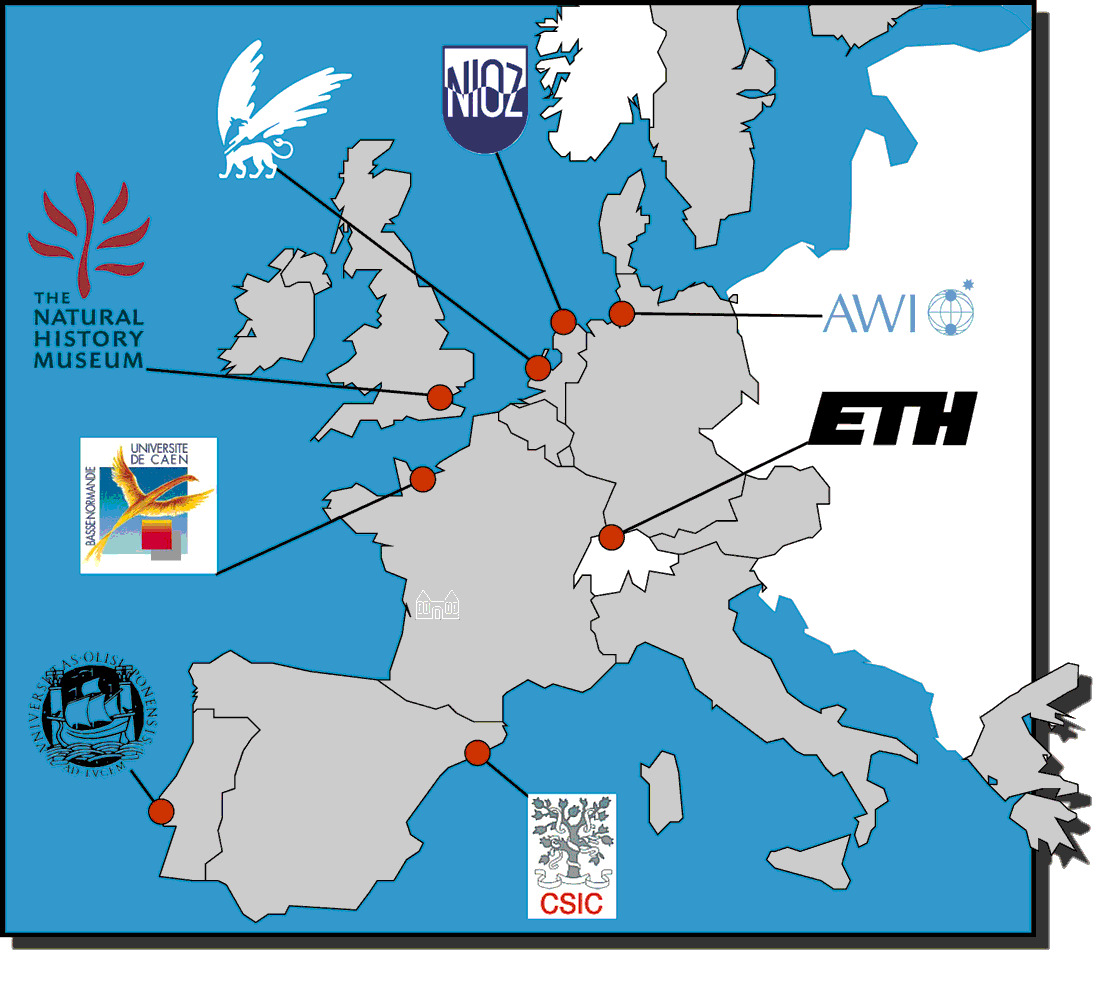 |
CODENET- COCCOLITHOPHORID
EVOLUTIONARY BIODIVERSITY AND ECOLOGY
NETWORK
|
 |
A Research Network of the Training and Mobility
of Researchers Activity of the European Commission.
A more technical introduction, Project Web Site

Coccolithophorids - unicellular marine plant plankton
with a calcareous skeleton - form a major component of the oceanic microplankton
in past and present oceans.
Since they form the base of the food chain they are of outstanding
importance for understanding of marine ecosystems. In addition they have
an exceptional geological record and are of great value for the dating
of marine sediments. |
 |

 |
The CODENET project is a network of eight
European universities and research institutes with participating scientists
in the fields of geology, biology and biochemistry. The Natural History
Museum team is based in the Palaeontology Department - with participants
in Zoology, Botany and in University College London. The team is working
on geological and biological projects within the network and is responsible
for network co-ordination. |

 |
Coccolithophorid algae can be grown in laboratory culture
allowing a range of biological, biochemical and molecular genetic research
to be carried out on them. A key feature of the CODENET strategy is concentration
on six taxa which are all being studied both from laboratory cultures and
from oceanographic and geological sample sets. The research groups at Caen,NHM
and ETH Zurich have special responsibility for isolation of the species,
from sea-water samples, the cultures are then freely available to all participants.
Culture-based studies include work on biomarker chemicals (NIOZ, CSIC), calcite trace element and isotope chemistry (VUA, U. Oviedo)
molecular genetics (AWI), life-cycles (Caen) and morphological variation
(NHM, ETHZ). |

| In parallel with the culture-based studies the project includes a wide range of complimentary studies based on field samples. CODENET scientists have participated in numerous cruises during the project in order to collect coccolithophore samples for integrated study of species distributions and the chemical signals they produce (chlorophyll record, alkenone biomarkers, coccolith calcite). Further studies have included use of sediment trap and geological samples for biogeographic and evolutionary studies.
The picture to the right shows the Meteor, a German oceanographic research vessel used by participants in cruises to the Canaries and South Atlantic. |
 |

For further information see more detailed
page or contact:
Dr Jeremy Young, Markus Geisen
Department of Palaeontology
The Natural History Museum
Cromwell Road
London SW7 5BD UK
Tel: +44 (0)20-7942-5286 Fax: +44 (0)20-7942-5546
Email: j.young@nhm.ac.uk
THE CODENET PAGES ARE HOSTED BY THE
NATURAL HISTORY MUSEUM, LONDON

|




